367. When Hotu had arrived in the night at the time when the Sun reached Antares Nonoma was out urinating - fertilizing the ground - which Sign should make us remember Raven (Corvus) to be contrasted with Crow (Ain in Taurus, *65) who was 4 synodic lunar months earlier than Alchita (α Corvi):
| 19 |
Net |
ε Tauri (Ain) |
Crow |
*65 = *183 - *118 |
May 25 (145) |
... There was
no water in the village. The lakes and rivers were dry.
Raven and Crow, two young girls who were having their
first menstrual courses, were told to go and draw water
from the ocean. Finding the journey too long, Raven
decided just to urinate into her basket-bucket. She
decieved no one and was severly scolded. Crow returned
much later but with drinking water. As a punishment,
Raven was condemned never to find water in the summer;
only in winter would she find something to drink. For
that reason the Raven never drinks during the hot
months; she speaks with a raucous voice because of her
dry throat ...
Presumably the urinating idea originated from the stars of Leo:
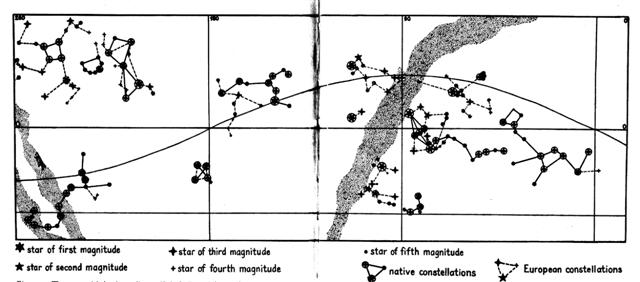
According to the Gregorian calendar at the time of the Pope the empty Hydra vessel at Alkes (α Crateris) had risen 161 (→ φ) right ascension days after 0h, whereas at the time of the Bull it had been in the last day of JUNE. Precession had moved Alkes two months ahead to °August 29 (241, *161):
| CLOSE TO THE SUN: |
| 6-13 (164) |
6-14 (180 - 15) |
6-15 |
6-16 |
| JUNE 28 |
29 (180) |
RANGI MEAMEA |
JULY 1 (*102) |
 |
 |
 |
 |
| (100) Ga4-16 |
Ga4-17 (100) |
Ga4-18 |
Ga4-19 |
| ν Hydrae (163.1) |
no star listed (164)
ALTAIR (α Aquilae)
|
Wings-27 (Snake)
η Oct. (165.4), ALKES (Shallow Basin) = α Crateris (165.6)
*124 = *165.4 - *41.4 |
ANA-TIPU-4 (Upper-side-pillar - where the guards stood) MERAK (Loin) = β Ursae Majoris (166.2), DUBHE (Bear) = α Ursae Majoris (166.7) |
| Aug 31 |
Sept 1 |
2 (*165) |
3 (246) |
| °Aug 27 |
28 |
29 (*161) |
30 (242) |
| 'Aug 4 (216) |
5 (*137) |
6 |
7 |
| "July 21 |
22 / 7 → π |
He Anakena 23 (204) |
24 (*125) |
| Hanga Hoonu |
Oromanga |
|
... Everywhere the dream soul looked around for a residence for the king. The dream soul went to Maunga Teatea and gave him the name Maunga Teatea A Hau Maka O Hiva. The dream soul of Hau Maka looked around. From Maunga Teatea she looked to Rangi Meamea (i.e., Ovahe).
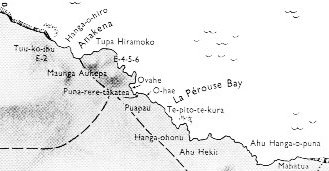
The dream soul spoke the following: There it is - ho! - the place - ho! - for the king - ho! - to live (there in the future), for this is (indeed) Rangi Meamea ...
... The Explorers arrived at Rangi Meamea in "July 23 (Anakena 23) and there they stayed on the beautiful beach of Oromanga for 27 days ...
... When Hotu's canoe had reached Taharoa, the vaginal fluid (of Hotu's pregnant wife) appeared. They sailed towards Hanga Hoonu [Bay of Turtles], where the mucus (kovare seems to refer to the amniotic sac in this case) appeared. They sailed on and came to Rangi Meamea, where the amniotic fluid ran out and the conctractions began. They anchored the canoe in the front part of the bay, in Hanga Rau. The canoe of Ava Rei Pua also arrived and anchoraged. After Hotu's canoe had anchoraged, the child of Vakai and Hotu appeared. It was Tuu Maheke, son of Hotu, a boy. After the canoe of Ava Rei Pua had also arrived and anchoraged, the child of Ava Rei Pua was born. It was a girl named Ava Rei Pua Poki ... |
| CLOSE TO THE FULL MOON: |
| 12-13 |
12-14 (348) |
12-15 |
12-16 (365 - 15) |
| DEC 28 |
29 |
30 (364) |
31 (*285) |
| ι Cephei (346.0), λ Aquarii, γ Piscis Austrini, σ Pegasi (346.5) |
SCHEAT AQUARII = δ Aquarii (347.0), ρ Pegasi (347.2), δ Piscis Austrini (347.4), FOMALHAUT (Mouth of the Fish) = α Piscis Austrini, τ Gruis (347.8) *306 = *347.4 - *41.4 |
FUM AL SAMAKAH (Mouth of the Fish) = β Piscium (348.3), ζ Gruis (348.5), ο Andromedae (348.9) |
Al Fargh al Mukdim-24 (Fore Spout) / Purva Bhādrapadā-26 (First of the Blessed Feet) / House-13 (Pig)
SCHEAT PEGASI = β Pegasi, π Piscis Austrini (349.3), κ Gruis (349.4), MARKAB PEGASI = α Pegasi (349.5)
*308 = *349.4 - *41.4 |
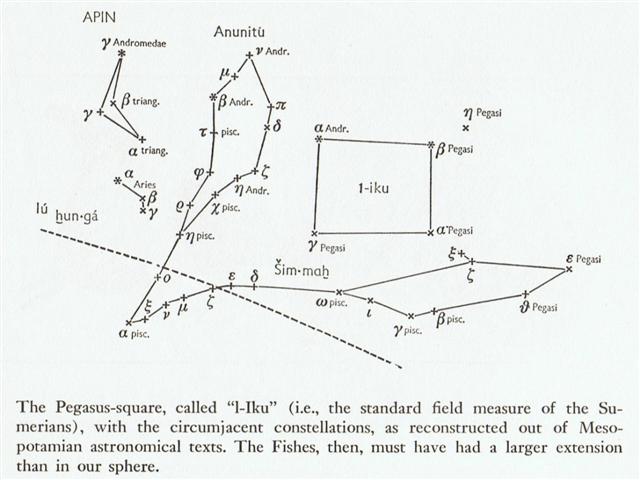 |
| March 2 |
3 |
4 (*348) |
5 (64) |
| °Febr 26 |
27 |
28 (*344) |
°March 1 (60) |
| 'Febr 3 |
4 |
5 (36) |
6 (*322) |
| "Jan 20 |
Tua Haro 21 |
22 |
23 (*308) |
... The Explorers had rested for 5 days in Hanga Hoonu and then they had reached Rangi Meamea in Anakena 23. Before that they had gone from Hanga Takaure in Anakena 18 after having rested for 7 days in this so called 'Bay of Flies'.
| 19 |
20 |
21 |
22 |
23 |
24 |
JUNE 25 |
26 |
27 |
28 |
29 |
JUNE 30 (181) |
| 12 |
13 |
14 |
15 |
16 |
17 |
He Anakena 18 |
19 |
20 |
21 |
22 |
He Anakena 23 (204) |
| Hanga Takaure |
Hanga Hoonu |
There were 204 - 181 = 23 precessional days up from the time of the Bull to the time of Bharani. And then there were an additional 60 - 23 = 37 (= *161 - *124) days up to the time of Gregory XIII.
Presumably the creators of Manuscript E alluded to the change, at the time of the Bull, brought about 16 days after the Sun had reached Sirius - who made all the waters rise, creating the beginning of a regeneration. Sirius stood like the pole (Te Pou) at the beginning - as did Spica and Regulus - it was not in day 181 but in day 1.
... The Sothic cycle was based on what is referred to in technical jargon as 'the periodic return of the heliacal rising of Sirius', which is the first appearance of this star after a seasonal absence, rising at dawn just ahead of the sun in the eastern portion of the sky. In the case of Sirius the interval between one such rising and the next amounts to exactly 365.25 days - a mathematically harmonious figure, uncomplicated by further decimal points, which is just twelve minutes longer than the duration of the solar year ...
... the seasonal cycle, throughout the ancient world, was the foremost sign of rebirth following death, and in Egypt the chronometer of this cycle was the annual flooding of the Nile. Numerous festival edifices were constructed, incensed, and consecrated; a throne hall wherein the king should sit while approached in obeisance by the gods and their priesthoods (who in a crueler time would have been the registrars of his death); a large court for the presentation of mimes, processions, and other such visual events; and finally a palace-chapel into which the god-king would retire for his changes of costume ...
... Pliny wants to assure us that 'the whole sea is conscious of the rise of that star, as is most clearly seen in the Dardanelles, for sea-weed and fishes float on the surface, and everything is turned up from the bottom'. He also remarks that at the rising of the Dog-Star the wine in the cellars begins to stir up and that the still waters move ...
... Arrow (Sirius & probably other adjacent stars in Canis Major) Although closely associated with the constellation of the Bow, the Arrow is always treated separately in Babylonian tradition. The annual rising of the Arrow marked the summer solstice when the sun was at its maximum height above the horizon. The Arrow was probably chosen for this role as it is the man-made object that can reach highest into the heavens. Similarly, the bird on a high perch, which is often seen besides the Arrow in ancient artwork, can also be thought of as representing the sun at its highest station ...
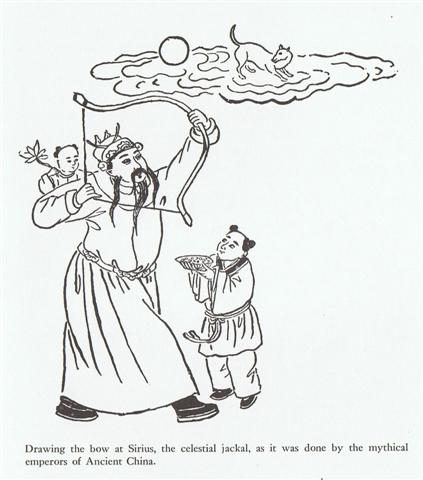
| CLOSE TO THE SUN: |
| 6-30 SIRIUS (true heliacal) |
7-1 |
7-2 |
7-3 (184 = 199 - 15) |
| JULY 15 (196 = 181 + 15) |
SIRIUS (apparent heliacal) |
17 (*118 = 4 * 29½) |
18 (199) |
 |
 |
 |
 |
| Ga5-6 |
Ga5-7 |
Ga5-8 (118) |
Ga5-9 |
| no star listed (180) |
π Virginis (181.0), θ Crucis (181.5) |
12h (182.6)
ο Virginis (182.1), η Crucis (182.5) |
ALCHITA (The Southern Tent) = α Corvi, MA WEI (Tail of the Horse) = δ Centauri (183.1), MINKAR (Beak) = ε Corvi (183.7), ρ Centauri (183.9) |
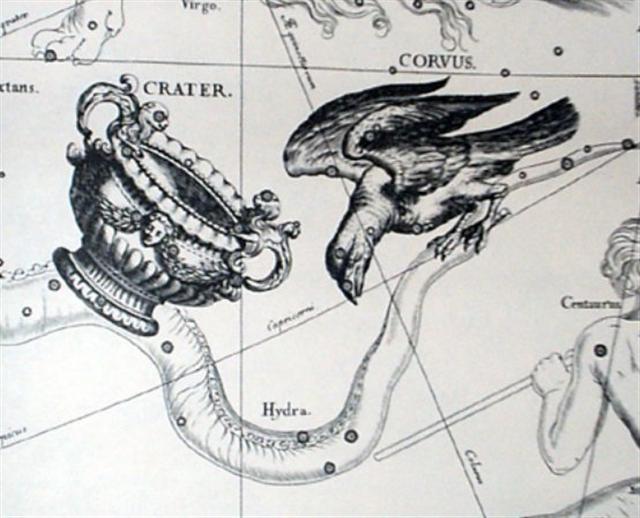 |
| Sept 17 (260 = 79 + 181) |
18 (*181 = 118 + 63) |
19 |
20 |
| °Sept 13 |
14 (*177) |
15 |
16 |
| 'Aug 21 (*153) |
22 |
23 |
24 (236) |
| "Aug 7 (*139) |
8 |
9 |
10 (222) |
| Oromanga |
| CLOSE TO THE FULL MOON: |
| 12-30 (364) |
12-31 |
1-1 |
1-2 |
| JAN 14 |
15 (*300) |
16 (*118 + *183) |
17 (*366 - *64) |
| DZANEB (Tail) = ω Piscium (362.4), γ² Oct. (362.8)
*321 = *362.4 - *41.4 |
η Tucanae (363.0), ψ Pegasi (363.1), 32 Piscium (363.2), π Phoenicis (363.4), ε Tucanae (363.6), τ Phoenicis (363.9)
*322 = *363.4 - *41.4 |
θ Oct. (364.4)
*323 = *364.4 - *41.4 |
Al Fargh al Thāni-25 (Rear Spout) 0h (365.25)
CAPH (Hand) = β Cassiopeiae, SIRRAH (Navel of the Horse) = α Andromedae (0.5), ε Phoenicis, γ³ Oct. (0.8) |
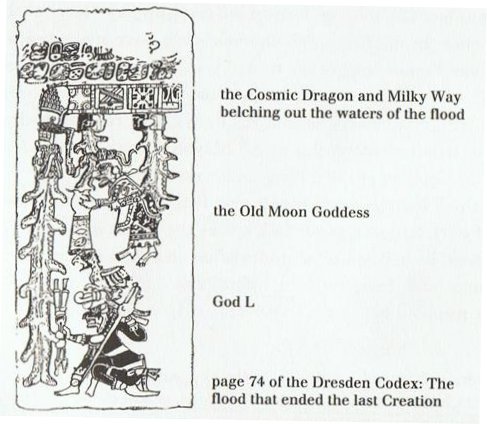 |
| March 18 (77) |
19 |
Equinox |
0h (*366) |
| 3-14 (73) |
°March 15 |
16 (*361) |
17 |
| 'Febr 19 (*336) |
20 |
21 |
22 (53) |
| "Febr 5 (*322) |
6 |
Tehetu'upú 7 (403) |
8 (39) |
On Easter island, at the time of rongoronge, this function was upheld by Antares.
... Antares, visible in the morning sky of December-January, came to stand for summer heat; hence the saying, 'Rehua cooks (ripens) all fruit'. The generally accepted version of the Rehua myth, according to Best, is that Rehua had two wives, the stars on either side of Antares. One was Ruhi-te-rangi or Pekehawani, the personification of summer languor (ruhi), the other Whaka-onge-kai, She-who-makes-food-scarce before the new crops can be harvested ...
... Hamiora Pio once spoke as follows to the writer: 'Friend! Let me tell of the offspring of Tangaroa-akiukiu, whose two daughters were Hine-raumati (the Summer Maid - personified form of summer) and Hine-takurua (the Winter Maid - personification of winter), both of whom where taken to wife by the sun ... Now, these women had different homes. Hine-takurua lived with her elder Tangaroa (a sea being - origin and personified form of fish). Her labours were connected with Tangaroa - that is, with fish. Hine-raumati dwelt on land, where she cultivated food products, and attended to the taking of game and forest products, all such things connected with Tane ...
The proper time for heliacal Antares to arrive should be day 288 (= 378 - 90) because that day had been chosen by Gregory XIII.
... The Julian calendar day Thursday, 4 October 1582 was followed by the first day of the Gregorian calendar, Friday, 15 October 1582 (the cycle of weekdays was not affected) ...
Antares was the Entrance Pillar (Ana-mua).
|
[E:31] he noho he hakaora.i ahu akapu.erua raa |
They made camp and rested at Ahu Akapu for two days. |
|
i te angahuru te maiva. o te raa o hora iti |
On the twenty-ninth day of the month of August ('Hora Iti') |
|
Hagahuru. Ten (agahuru, hagauru). P Mq.: onohuú, okohuú, id. Ta.: ahuru. id. Churchill. The Maori recognized two main divisions of the year: winter or takurua, a name for Sirius which then shone as morning star, and summer, raumati or o-rongo-nui, 'of the great Rongo', god of agriculture. They occasionally recognized spring as the digging season koanga, from ko, the digging stick or spade. The autumn or harvest season was usually spoken of as ngahuru, 'tenth' (month), although it was considered to include also the last two months of the year. Mahuru was the personification of spring. Makemson.
The word maiva could possibly be mai-iva, where mai = sick and iva = 9, in a way possibly implying the day which was number 10 (hangahuru) + mai(i)va = 29. When the Sun was in August (Hora Iti) then the Full Moon (Hotu) was in February and there was no day 29 in Tehetu'upú. Furthermore, Tehetu'upú 9 (40) could have been alluded to (2-9) because in Roman times this would have been day 40 + 14 = 54 ('February 23 = Terminalia). The Full Moon was in Tehetu'upú 28 (= 9 + 19) when the Sun reached the 'plumb line' between the Fox and Spica.
... There is a further motivation of the same in the kava taken immediately after the chief's by the herald, a representative of the land. This drinking is 'to kick', rabeta, the chief's kava. Raberabe, the same reduplicated version, means 'a sickness', the result of kicking accidently against a 'drau-ni-kau'... The herald here takes the effects on himself: drau-ni-kau is the common name for 'sorcery'... |
|
i oho ai ki pu pakakina.he tuu he noho he na(-) |
they went to Pu Pakakina. They arrived, remained there, and gave |
|
pe i te ingoa ko pu pakakina.a Ira.he noho |
the name 'Pu Pakakina A Ira'. They remained |
|
etahi marama.i pu pakakina. |
one month in Pu Pakakina. |
The heliacal position of Antares was 80 days after the day when Regulus returned to visibility:
|

|

|

|

|
78 |

|

|

|

|

|

|
|
maitaki |
inonino |
Ga4-20 |
Ga4-21 (88 + 16) |
Ga7-14 |
Ga7-15 (184) |
Ga7-16 |
Ga7-17 |
Ga7-18 |
Ga7-19 (188) |
|
good |
bad |
11h (167.4) |
REGULUS |
84 = 188 - 104 |
| 6-2 (*73) |
14 |
6-17 (*88) |
6-18 |
6-19 |
| JUNE 17 (168) |
JULY 2 → 73 |
3 (*104) |
4 (185) |
 |
 |
 |
 |
| Ga4-5 (88) |
Ga4-20 → 80 |
Ga4-21 (104 = 182 - 78) |
Ga4-22 |
|
Al Jabhah-8 (The Forehead) / Maghā-10 (Bountiful) / Sharru-14 (King)
10h (152.2)
AL JABHAH = η Leonis (152.4), REGULUS = α Leonis (152.7)
*111 = *152.4 - *41.4 |
11h (167.4)
χ Leonis, χ¹ Hydrae (167.1), χ² Hydrae (167.3) |
AL SHARAS (The Ribs) = β Crateris (168.6) |
Al Zubrah-9 (The Mane) / Purva Phalguni-11 (First Reddish One)
ZOSMA (Girdle) = δ Leonis (169.2), COXA (Hips) = θ Leonis (169.4)
*128 = *169.4 - *41.4 |
| Aug 20 (232) |
Sept 4 |
5 (248 = 104 + 144) |
6 |
| °Aug 16 (*148) |
°Aug 31 |
°Sept 1 (244) |
2 |
| 'July 24 (*125) |
'Aug 8 (*140) |
9 |
10 (222) |
| Anakena 10 (191) |
"July 25 (*126) |
26 (207 = 191 + 16) |
27 (288 - 80) |
|
... They took their provisions with them, carrying them on their shoulders, went on, and reached Te Pou. They made camp and slept in Te Pou on the tenth day of the month of July ('Anakena').
| [E:22] he amoamo he oho he tuu ki te pou he noho |
| he moe i te pou.i te angahuru o te raa.ko te |
| anakena. |
Amo. To carry on one's shoulders: O Yetú i-amo-ai te tatauró ki ruga ki-te maúga Kalvario. Jesus carried his cross up to the Calvary. Amoga, bundle; to tie in a bundle: he-amoga i te hukahuka, to tie a bundle of wood. Vanaga. 1. A yoke, to carry; amoga, burden, load. 2. To bend, to beat a path. Churchill. Âmo. 1. To clean, to clean oneself: he-âmo i te umu, to clean the earth oven; ka-âmo te hare, ka haka-maitaki, clean the house, make it good; he-âmo i te ariga, to clean one's face wetting it with one's hand. 2. Clear; ku-âmo-á te ragi, the sky is clear. 3. To slip, to slide, to glide (see pei-âmo). Ámoámo, to lick up, to lap up, to dry; to slap one's body dry (after swimming or bathing): he-âmoâmo i te vaihai rima. Vanaga. Amoamo. 1. To feed, to graze. 2. To spread, to stretch (used of keete). Churchill.
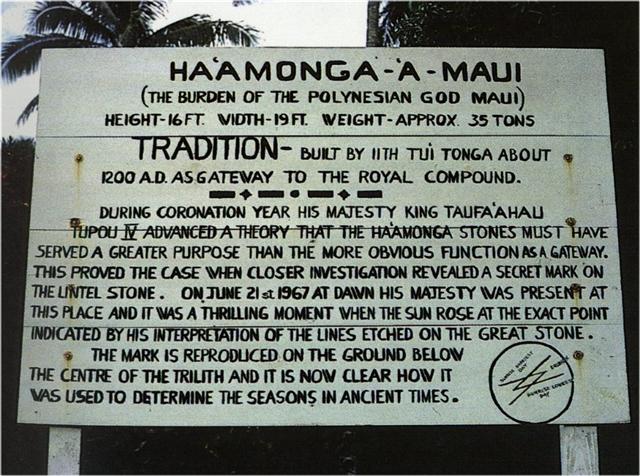
|
Therefore Nonoma urinated in the night.
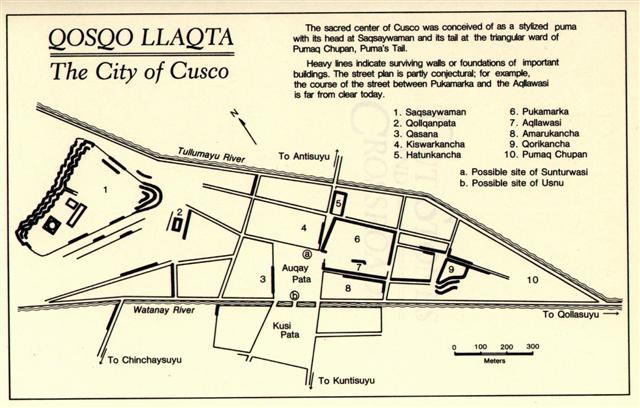
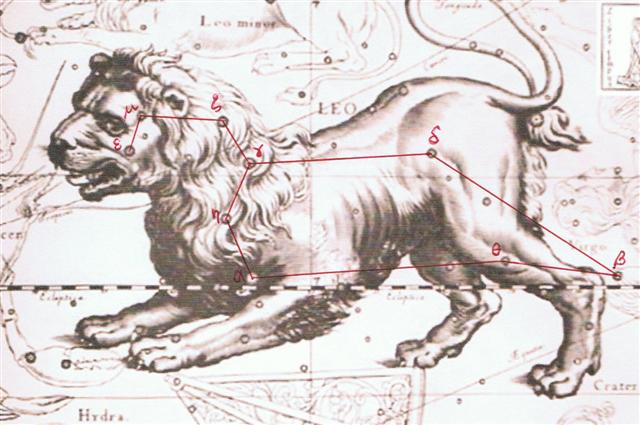
|





















